This website uses cookies so that we can provide you with the best user experience possible. Cookie information is stored in your browser and performs functions such as recognising you when you return to our website and helping our team to understand which sections of the website you find most interesting and useful.

Contact Lenses: A Comprehensive Beginner’s Guide
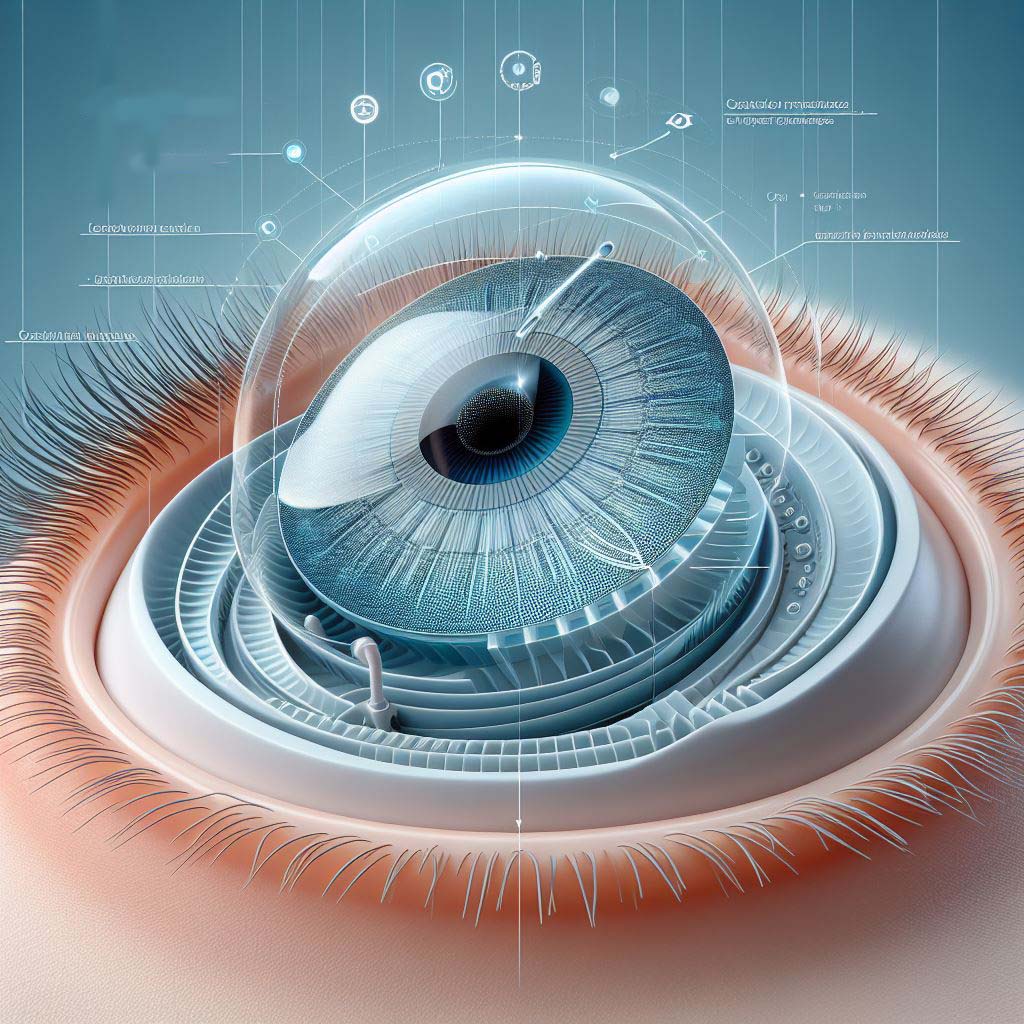
Introduction to Contact Lenses
In the market of visual correction and style, contact lenses stand as discreet marvels. If you’re embarking on understanding contact lenses, this guide is your compass. Let’s dive into the depths of this ocular universe, covering everything from the basics to the finer nuances.
Navigating the Lens Landscape
Contact lenses, or simply “contacts,” are thin, nearly invisible lenses that rest gently on the surface of your eyes. Used by millions worldwide, they serve not only as vision correctors but also as tools for cosmetic expression.
What does Contact Lens Do?
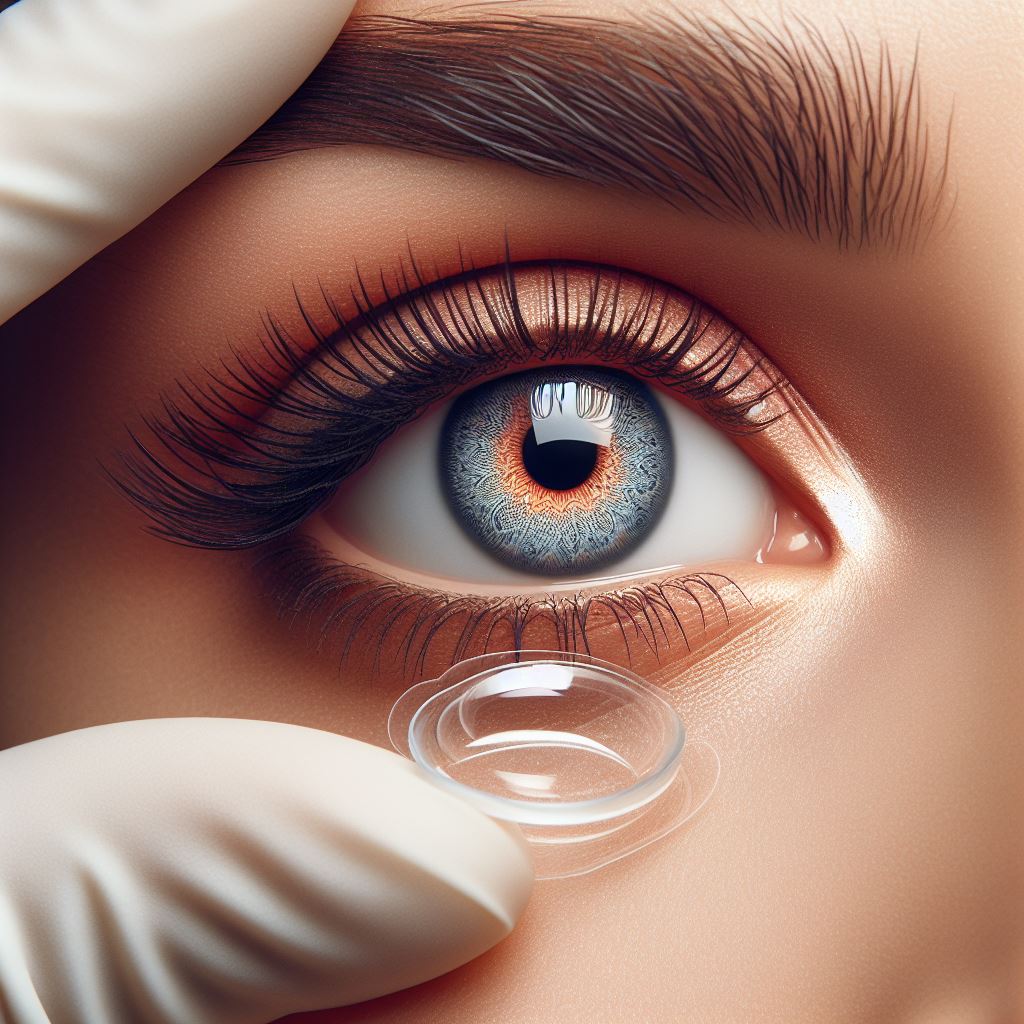
The role of contact lens is to rectify refractive errors, enhancing your vision similarly to eyeglasses. With approximately 45 million Americans utilising contact lenses, they can serve as a secure and efficient substitute for eyeglasses when used correctly. The global market for contact lenses has been estimated at a staggering $6.1 billion, showcasing their widespread popularity.
Classifying Contact Lenses
Now, let’s embark on the classification journey, where we categorise these lenses based on their primary functions, materials, wear schedules, and replacement schedules.
Contact Lens Types Overview:
| Lens Type | Description |
| Soft Contact Lenses | Made of flexible plastics, easy to adjust, and most commonly worn. |
| Hard (Rigid Gas Permeable) Contact Lenses | Durable, resistant to deposits, provides clear vision, requires a longer adjustment period. |
| Daily Wear Contact Lenses | Designed for daytime use, not for overnight wear. Removed, cleaned, and disinfected nightly. |
| Extended Wear Contact Lenses | Suited for overnight wear, with varying durations. Caution: linked to serious eye infections. |
| Daily Disposable Contact Lenses | Single-use lenses, discarded at the end of each day. Avoid prolonged use for comfort and safety. |
| Planned Replacement Contact Lenses | Labeled as “disposable,” removed nightly, and re-worn for several days. Replacement schedules vary. |
| Hybrid Contact Lenses | Combine a rigid center with a soft outer “skirt.” Primarily for irregular corneas. |
| Orthokeratology (Ortho-K) | Specially designed hard lenses for overnight wear, temporarily changes corneal shape. |
| Scleral Contact Lenses | Larger RGP lenses resting on the sclera, prescribed for damaged corneas or severe dry eyes. |
| Decorative Contact Lenses | Cosmetic lenses for enhancing or changing eye color. Requires a prescription. |
Important Tips:
- Consult an eye care provider for a complete eye examination and contact lens fitting.
- Adhere to prescribed wear and replacement schedules to prevent complications.
- Daily wear lenses must be removed, cleaned, and stored properly each night.
- Extended wear lenses require careful consideration due to associated risks.
- Decorative lenses, for cosmetic purposes, need a prescription for FDA compliance.
Functions of Contact Lenses
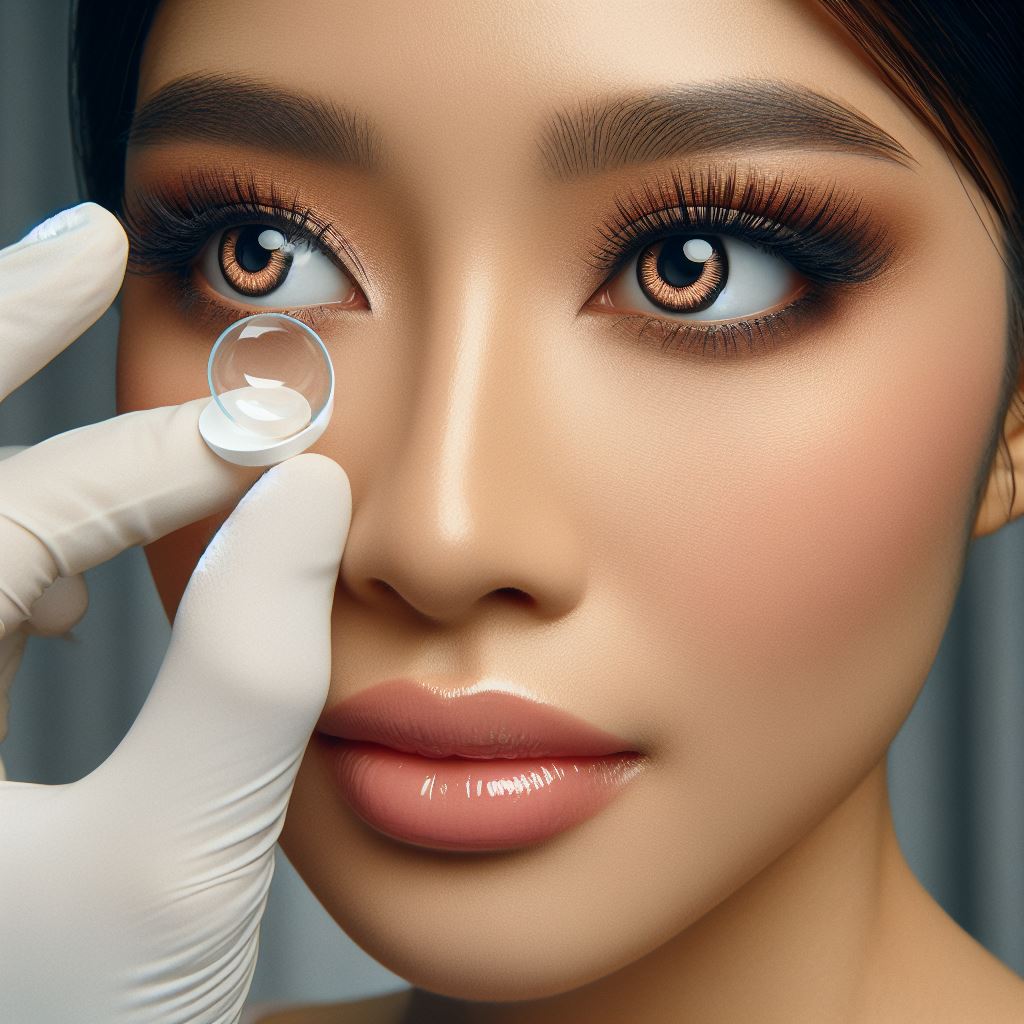
Correction of Refractive Error:
The most common function is to correct refractive errors, ensuring light enters the eye with the right power for clear vision.
The primary and most common function of contact lenses is to correct refractive errors, ensuring that light entering the eye is properly focused for clear vision.
Types of Refractive Errors: Contact lenses are tailored to address conditions such as nearsightedness (myopia), farsightedness (hyperopia), astigmatism, and presbyopia.
Precise Vision Correction: By directly focusing light onto the retina, contact lenses offer a precise correction, often providing clearer and sharper vision compared to glasses.
Correction of Presbyopia:
Some lenses address presbyopia, a condition requiring a different prescription for reading than for distance vision.
Presbyopia, a common condition with age, requires a different prescription for reading than for distance. Contact lenses address this through multifocal lenses or monovision strategies.
These lenses have distinct prescriptions in different zones, allowing for seamless transition between near and far vision. Involves using one eye for distance and the other for close-up tasks, providing a practical solution for presbyopia.
Color Correction:
For those with color deficiencies, specialized lenses offer an enhanced ability to distinguish colors. Enhancing Color Perception: Specialized contact lenses, like red-tinted “X-Chrom” lenses, aid individuals with certain color deficiencies. Though not restoring normal color vision, they can improve color distinction.
Achromatopsia: Red-filtering lenses can be an option for extreme light sensitivity in conditions such as achromatopsia.
Magnification and Telescopic Lenses:
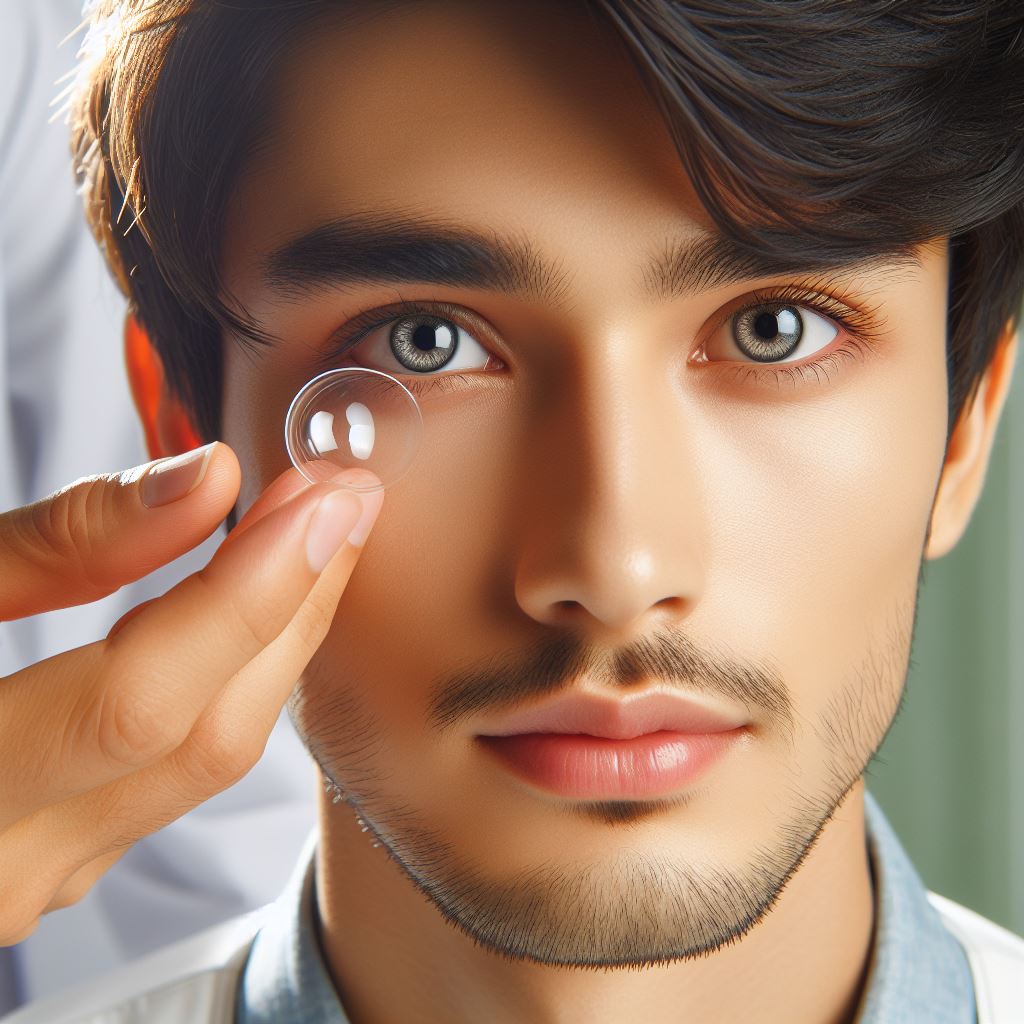
Exploring Future Applications: Ongoing research involves embedding telescopic lenses and electronic components in contact lenses, potentially providing magnification capabilities. Future advancements may diversify the use of contact lenses.
Types of Contact Lenses
Corrective Lenses:
The most common type, designed to enhance vision. What They Do: Corrective lenses are vision heroes, fixing common sight issues like nearsightedness, farsightedness, astigmatism, and presbyopia.
Pro Tip: Regular check-ups and proper care keep them in top shape, ensuring your vision stays sharp. Easy, right?
Cosmetic Lenses: Not just for vision correction; these lenses aim to change the appearance of your eyes. Beyond Vision: Cosmetic lenses aren’t just for seeing clearly; they’re your go-to for an eye makeover.
Style Options: Whether it’s for a subtle shift or a bold transformation, these lenses offer various colors and effects.
Therapeutic Scleral Lenses:
Large, firm lenses that rest on the sclera, used in conditions like severe dry eye syndrome. Purposeful Design: Therapeutic scleral lenses, sizable and sturdy, provide relief for specific eye conditions.
The Scleral Embrace: They rest gently on the sclera (the white of your eye), creating a reservoir of soothing fluid.
Dry Eye Aid: Specifically crafted for severe dry eye syndrome, these lenses offer comfort and support, allowing your eyes to heal.
Hybrid Lenses:
Hybrid lenses combine the durability of rigid lenses with the comfort of soft lenses. The rigid gas-permeable centre ensures crisp, clear vision, while the outer “skirt” made of soft lens material adds comfort and keeps the lens centred on your eye. These lenses are tailored for those with irregular corneas, providing a unique option for specific visual needs. Consult with your eye care provider to see if hybrid lenses are the right fit for you.
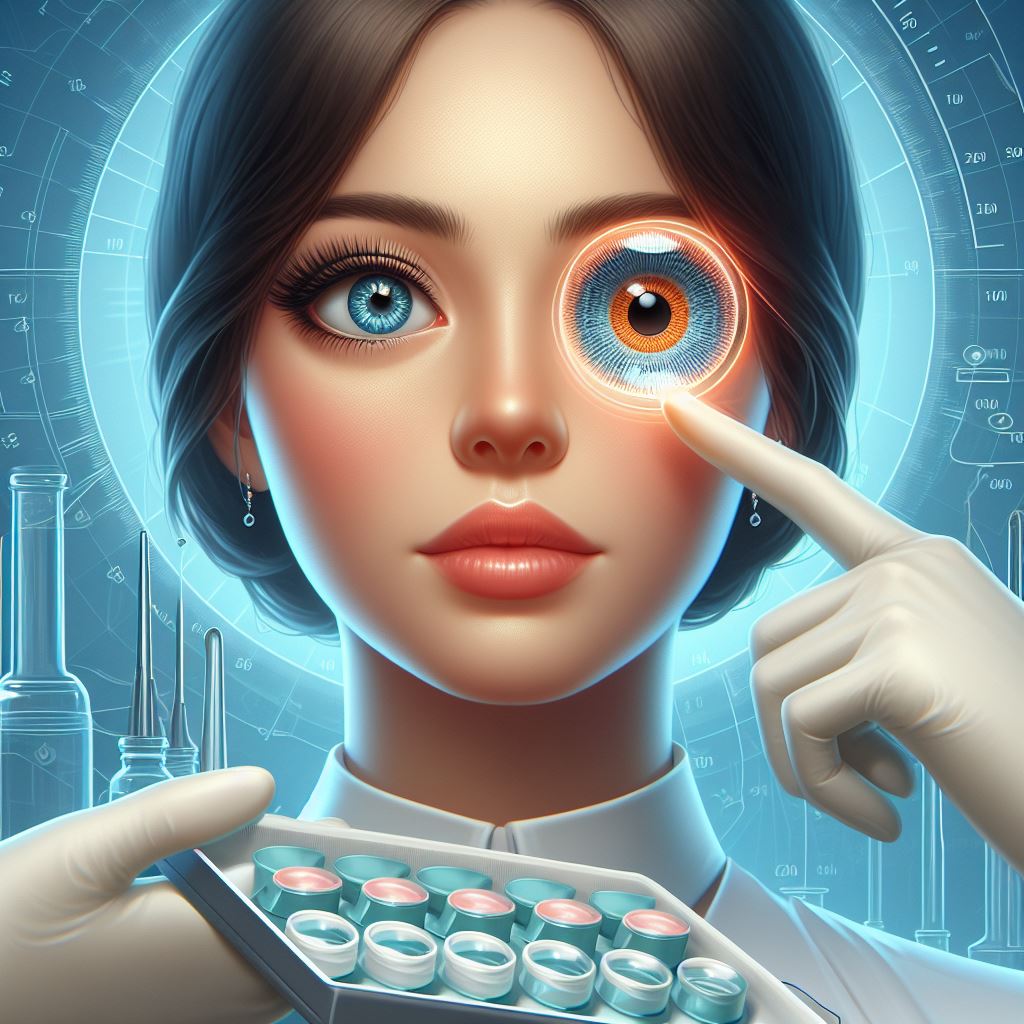
Pros and Cons of Contact Lenses
Like any technology, contact lenses have their merits and considerations. Let’s explore both sides of the coin.
Pros:
Enhanced peripheral vision.
Ideal for outdoor activities, as they don’t collect moisture.
Compatibility with various eyewear.
Cons:
Proper hygiene and care are crucial.
Potential for discomfort during the adaptation period.
Not suitable for everyone, depending on individual eye health.
Dos and Don’ts: Navigating Your Lens Journey
To ensure a smooth journey in the contact lens world, here’s a quick guide:
Dos:
Wash hands thoroughly before handling lenses.
Follow your eye care professional’s instructions for insertion and removal.
Adhere to the recommended wearing schedule.
Don’ts:
Don’t use saliva or water to clean your lenses.
Avoid wearing lenses beyond the recommended duration.
Don’t compromise on hygiene.
Table of Statistics: A Glimpse into the Lens Landscape
Let’s take a statistical snapshot to better understand the prevalence and usage patterns of contact lenses globally.
Average age of wearers: 31 years
Percentage of female wearers: Two-thirds
Global market estimate (2010): $6.1 billion
US soft lens market estimate (2010): $2.1 billion
A Clearer Vision Awaits
As we conclude this comprehensive guide, remember that contact lenses offer not just visual clarity but a canvas for self-expression. Whether you’re correcting your vision or experimenting with your look, the journey with contact lenses can be transformative.







